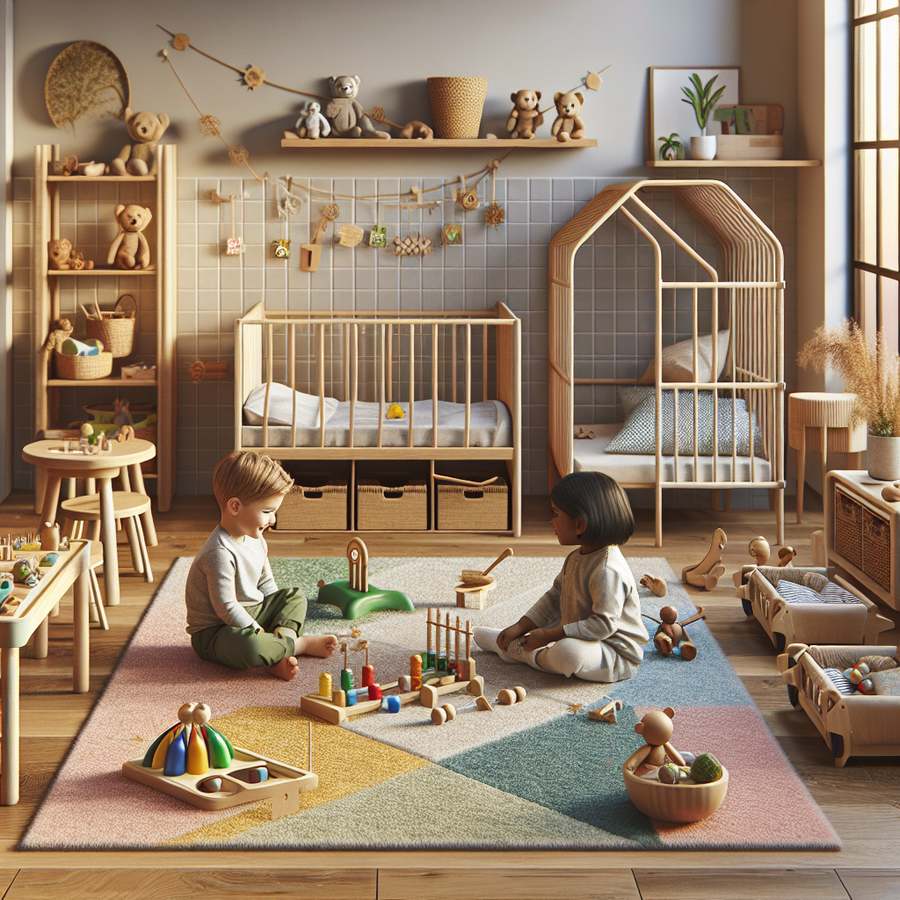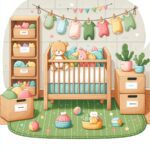Setting up a Montessori nursery is not just about creating a beautiful space for your baby; it’s about crafting an environment that nurtures independence, curiosity, and a love for learning from the very start. As a new parent, I embarked on this journey with a mix of excitement and trepidation, keen to provide the best for my little one while navigating the sea of information on Montessori principles. In this guide, I’ll share with you not only the essentials of setting up a Montessori nursery but also personal anecdotes and tips that I wish I knew earlier. So, let’s dive into the world of Montessori, and how you can bring its magic into your home.
What is the Montessori Method, and why choose it for your nursery?
The Montessori Method, developed by Dr. Maria Montessori, is an educational approach that emphasizes self-directed activity, hands-on learning, and collaborative play. In a Montessori nursery, the environment is designed to meet the developmental needs of children at each stage of their growth. My decision to adopt this approach was influenced by its focus on building independence, respect, and a deep love for learning — qualities I deeply yearn to instill in my child.
When I first stumbled upon the concept of Montessori education, I was captivated by its child-centered philosophy. The idea that a nursery could be more than just a room, but a carefully curated environment tailored to the unique needs and potentials of my baby, was both revolutionary and deeply resonant with my parenting goals.
How do you set up a Montessori nursery at home?
Setting up a Montessori nursery requires a thoughtful approach, focusing on simplicity, natural materials, and accessibility. The goal is to create a safe, welcoming space where your baby can explore and learn at their own pace. Here are some key elements to consider:
First and foremost, start with a low bed or a floor mattress, which encourages independence by allowing your child to get in and out of bed on their own. This was a game-changer for us, fostering a sense of autonomy and confidence in my little one from an early age. Next, ensure that all furniture is child-sized and accessible; shelves should be low, and materials should be within easy reach. This empowers your child to choose their activities, promoting self-directed learning.
Another crucial aspect is incorporating natural materials and real objects into the nursery. Instead of plastic, opt for items made of wood, metal, cotton, and other natural substances. This not only reduces the exposure to chemicals but also provides your child with a more authentic sensory experience. Incorporating plants, a fish tank, or even a small garden can introduce your child to the wonders of nature early on.
What are the essential Montessori materials for your nursery?
The beauty of setting up a Montessori nursery lies in its emphasis on simplicity and intentionality. You don’t need to break the bank with expensive toys; instead, focus on a few high-quality materials that align with Montessori principles. Some essentials include sensory balls, wooden blocks, mirrors, and practical life tools like small brooms and pitchers for pouring water. These materials are designed to develop your child’s fine motor skills, hand-eye coordination, and sense of order.
During my nursery setup, I found that including a variety of textures and colors in the play area sparked curiosity and engagement. However, it’s crucial to rotate toys and materials regularly to maintain your child’s interest and challenge their developing skills. This act of curating their environment became a mindful practice, reminding me to observe and adapt to my child’s evolving interests and abilities.
How can you incorporate Montessori principles into daily routines?
Setting up a Montessori nursery is just the beginning; integrating Montessori principles into your daily routines is where the real magic happens. This means respecting your child as a capable individual and involving them in everyday activities. Simple practices like allowing them to choose their clothes, helping with meal preparation, and encouraging them to tidy up after themselves can have profound effects on their development.
In our home, meal times became an opportunity for learning and connection. We introduced child-sized utensils, plates, and cups to encourage self-feeding and independence. This not only fostered my child’s motor skills but also their sense of accomplishment and self-esteem. Similarly, dressing and personal care routines were adapted to support autonomy, with low hooks for clothes and a step stool by the sink to enable washing hands independently.
What challenges might you face in setting up a Montessori nursery, and how can you overcome them?
While the benefits of a Montessori nursery are vast, the journey is not without its challenges. Space constraints, budget limitations, and skepticism from family or friends can pose hurdles. In facing these challenges, remember that the essence of Montessori is adaptability and observation. You don’t need a perfect setup or all the recommended materials to start; even small, intentional changes can make a significant difference.
For those of us with limited space, prioritizing a few key elements like a floor bed and low shelves can still create a Montessori-inspired environment. Budget constraints can be addressed by opting for DIY solutions, second-hand finds, and focusing on natural, everyday objects instead of expensive toys. As for skepticism, educating yourself and sharing Montessori’s benefits with your loved ones can help align your parenting choices with those around you.
In conclusion, setting up a Montessori nursery is a deeply rewarding process that goes beyond aesthetics to touch upon the core values of independence, respect, and love for learning. As you embark on this journey, remember to observe, adapt, and most importantly, enjoy the precious moments of discovery and growth with your little one.
For further insights and tips on navigating the early years, be sure to explore related topics such as balancing work and new motherhood, creating a baby-friendly home for first-time parents, and tips for new dads building a bond with your baby. Each step of this journey offers unique challenges and joys, and by embracing a Montessori-inspired approach, you’re laying down a foundation of lifelong learning and curiosity.













